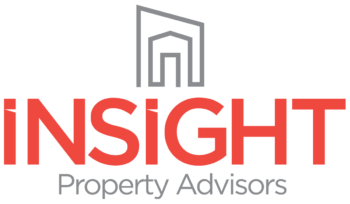Commercial real estate investing has been growing in popularity as investors seek consistent returns without the stressful ups and downs of the stock market. In this article, we’ll share the benefits of this alternative investment asset and how to get started.
What is Commercial Real Estate Investing?
Commercial real estate (CRE) is a property designed to make a profit (such as offices, retail space, apartments, or manufacturing facilities). You can buy CRE directly or invest through a trust or crowdfunding platform. Profits come from rental payments and appreciation.
Why Should I Invest in Commercial Real Estate?
Investing in commercial real estate (CRE) has several advantages. Most notably, it’s a tangible asset that diversifies your portfolio. CRE investments also have returns on par with the stock market – but with less volatility.
Let’s take a closer look at these and other benefits of commercial real estate investing.
Intrinsic Value
Commercial real estate is a hard asset, meaning there’s value in both the land itself and the property – and this usually appreciates over time. So, even if you have no rental income, you’ll still have an asset.
Diversification
The cardinal rule of investing is to not put all your eggs in one basket. In other words, having a hard asset to back up a portfolio of publicly-traded stocks can lower your risk of potential losses.
Strong Returns
The S&P 500 index has returned an annualized average of around 10% since its inception in 1926 through 2019. How does commercial real estate compare? Quite well. The average 25-year return for CRE investments was 9.4% to 10.5% depending on whether it’s privately-owned or through a real estate investment trust.
Leveraged Buying Power
Unlike other investment vehicles, you can finance your commercial real estate investment. A typical down payment is 20-25% of the purchase price. This allows you to build a large portfolio with a relatively small initial investment. As long as the profits from owning and operating the property are greater than the interest on a loan, it’s a viable way to grow your assets.
Forced Appreciation
The value of an investment property is based on the amount of revenue it generates. To “force” appreciation, you can make strategic improvements, cut expenses, or increase revenue through higher rent. When you own residential properties, you have less control over appreciation since it’s tied to comparable homes.
Inflation Offset
Commercial property owners can offset rising operational and maintenance costs by increasing rent prices. You can create a lease that requires the tenant to pay for expenses like utilities and property taxes when they exceed a set price ceiling. Alternatively, short-term leases or escalating leases can help you adjust revenue as needed.
Steady Cash Flow
One of the most appealing benefits of commercial real estate investing is consistent cash flow through rental payments. With a greater number of tenants, there’s less risk that a few vacancies will have a major effect on this income stream.
Tax Advantages
Commercial real estate has many tax advantages. For example, you can deduct mortgage interest payments, renovations and maintenance, and property depreciation. Plus, the longer you hold the property, the lower your capital gains tax will be after you sell.
Commercial real estate investments are an excellent way to diversify your portfolio. They have returns on par with the stock market – but with less volatility.
How To Get Started in Commercial Real Estate Investing
Now that we’ve covered the benefits, let’s talk about how to invest in commercial real estate.
1. Assess property types
There are a wide variety of property types you could purchase, each with its own set of benefits, drawbacks, and complexities. For example, multifamily properties will typically have more tenants and shorter leases compared to office complexes. Tenants of medical facilities may require customized build-outs, but you can charge higher rent. Find out more about each sector so you know which one makes the most sense for your budget, experience, and comfort level with risk.
2. Research your local market
As you look at property types, be sure to zero in on your local market. For example, industrial space might be doing well across the country, but you may find there’s an oversupply in your targeted area. Assess both the current availability and any new square footage from construction and planned developments. Then, ask yourself: Is there a potential risk of market saturation? On the flip side, is there a reason the area is lacking industrial space? Perhaps there’s no demand.
3. Identify funding sources
If you don’t have the capital to fund your investment, there are two types of real estate financing – debt and equity. Debt financing is a secured or unsecured loan. Equity financing involves selling a share of the company’s equity in exchange for capital. You’ll need to evaluate your long-term goals and financial needs to decide which type of financing (or a combination of the two) is right for you.
4. Review the investment opportunity
If you’ve found a viable opportunity, now’s the time to conduct thorough due diligence. You’ll want to examine financials, tax returns, and profit and loss statements. You may also need to conduct property inspections, a feasibility study, or any other research. This is where a commercial real estate advisor is invaluable. They can help you understand the property’s potential, including factors like added value from improvements and tax incentives, as well as steer you away from properties with red flags.
Tips for Investing In Commercial Real Estate
Now, for some final commercial real estate investing advice.
Understand commercial real estate metrics
Make sure you learn about the most common metrics in commercial real estate so you can make informed decisions. For example, net operating income (NOI) represents all revenue and costs from a particular property, before taxes. This will give you an idea of how much you’ll make from an investment minus operating expenses. You’ll also want to understand the capitalization rate. This is the ratio of NOI to property asset value. Also called a cap rate, it provides an estimate of future profits or cash flow.
Get an accurate property valuation
There’s much more to a commercial property valuation than looking at comparables on the market. Since the property’s value is based on the amount of revenue it generates, you’ll need to assess what you can expect to earn in the short and long term. You don’t want to take this information at face value from the seller. When you work with Insight Property Advisors, we can apply extensive market knowledge and a sophisticated set of analytics to ensure the final number is accurate.
Know your strengths
Becoming a commercial property investor requires a lot of different skill sets – and most people don’t have all of them when they’re starting. Think about where you need help – whether it’s doing market research, evaluating financial statements, or managing the property day-to-day – and prioritize finding the right partners. You’ll avoid costly mistakes and focus on what you do best.
Have a contingency fund
Even with the best research and planning, commercial real estate investing has risks and delays. We recommend setting aside a contingency fund of 5-15% to help with unexpected expenses or cover your debt until the property is cash positive. This is especially important for new investors who may not have the experience to anticipate everything.
Key Takeaway
Commercial real estate can yield high returns on investment. But success requires a commitment to thorough research and the right partners to guide the way.
Ready to begin? Contact the experts at Insight Property Advisors. From acquisition to financing to property management, we can meet all your real estate needs under one roof.



 By submitting information, I am providing my express written consent to be contacted by representatives of this website through a live agent, artificial or prerecorded voice, and automated SMS text at my residential or cellular number, dialed manually or by autodialer, by email, and mail.
By submitting information, I am providing my express written consent to be contacted by representatives of this website through a live agent, artificial or prerecorded voice, and automated SMS text at my residential or cellular number, dialed manually or by autodialer, by email, and mail.
